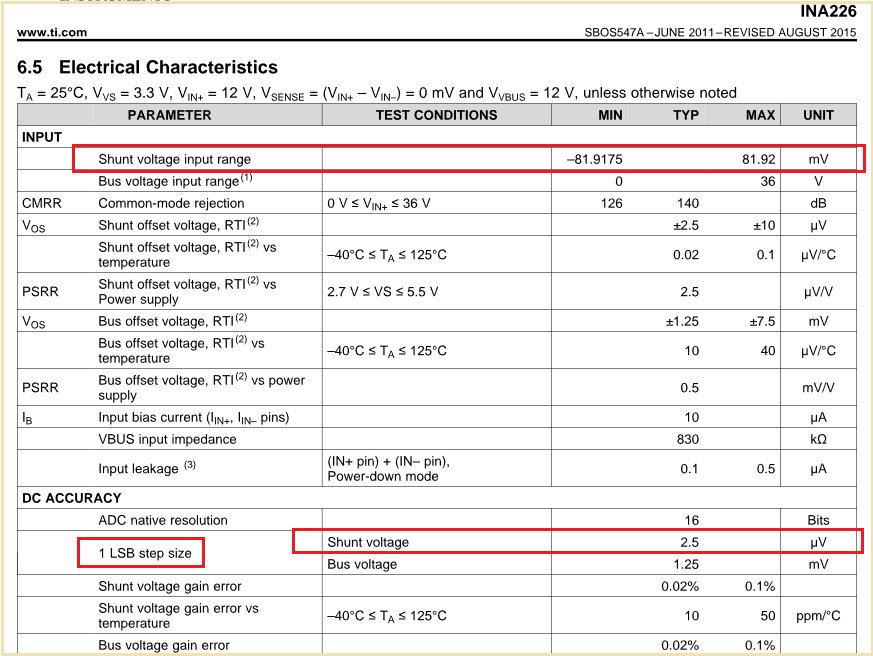Other Parts Discussed in Thread: INA238, INA228
Dear TI Team,
We are using INA226 in our latest design to measure load Current, Voltage and Power of core supply voltages on the board. So the core supply voltage is 0.8V and max current is 80A.
We are using a current sense resister of 500uOhm. We would like to know,
1. Can we increase the sense resistance value?
2. What will be the measurement resolution considering the full scale range ( considering ADC error )
3. What is the ADC error and ADC noise which should be considered for design?
4. As per datasheet its 16 bit ADC but we would like to know is there any chance that 1 bit / 2 bit error can happen.?
Kindly provide your input for above queries.
Best Regards,
Vyshnav Krishnan


